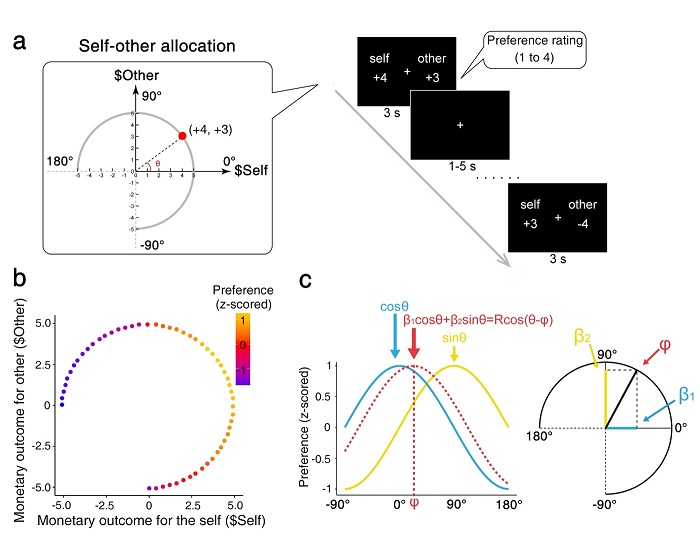On March 25 th 2019, Nature Neuroscience published a research article entitled “Oxytocin modulates social value representations in the amygdala” from Dr. Yina Ma’s group at the State Key Laboratory of Cognitive Neuroscience and Learning, IDG/McGovern Brain Research Institute at Beijing Normal University. In this study, they propose and establish the social reference model that the preferred self-other allocation (that is, what an individual hopes the allocation will be) serves as a social reference point against which potential allocations are represented and that quantity can guide social value-based decisions.
Humans live in complex social environments and rely heavily on social reciprocity. Many of our important decisions are made in social contexts where the costs and benefits to both ourselves and other people need to be considered. Deciphering the neural codes that represent potential rewards to oneself and others is crucial for understanding social reciprocity and social decision. Integrating computational modeling with functional magnetic resonance imaging, Dr. Yina Ma’s group investigated the neural representation of social value and the modulation by oxytocin in participants evaluating monetary allocations to self and other. Specifically, they tested whether intranasal administration of oxytocin, a nine-amino acid neuropeptide, differentially modulates the neural representation of social values in prosocials and individualists performing a monetary outcome-pair evaluation task during fMRI scanning in a double-blind placebo-controlled between-subjects design.

They first found that an individual’s preferred self–other allocation serves as a reference point for computing the value of potential self–other allocations. Their social reference model most parsimoniously explains behavior consistent with social values being encoded as distance to an individual-specific reference point. In more prosocial participants, amygdala activity encoded a social-value-distance signal; that is, the value dissimilarity between potential and preferred allocations. Intranasal oxytocin administration amplified this amygdala representation and increased prosocial behavior in more individualistic participants but not in more prosocial ones. Their results reveal a neurocomputational mechanism underlying social-value representations and suggest that oxytocin may promote prosociality by modulating social-value representations in the amygdala.

This work was supported by National Natural Science Foundation of China Projects (No. 31722026, 31771204, 91632118 to Y.M.) and start-up funding to Y.M. from the State Key Laboratory of Cognitive Neuroscience and Learning, IDG/McGovern Institute for Brain Research, Beijing Normal University.
Paper link:
Liu, Y., Li, S., Lin, W., Li, W., Yan, X., Wang, X., Rutledge, R & Ma, Y. (2019). Oxytocin modulates social value representations in the amygdala. Nature Neuroscience, 22, 633-641.
https://www.nature.com/articles/s41593-019-0351-1.pdf
News & Views at Nature Neuroscience: https://www.nature.com/articles/s41593-019-0362-y
Link to Dr. Yina Ma’s group:
http://brain.bnu.edu.cn/a/zh/keyantuandui/jiaoshou_yanjiuyuan/2016/0223/632.html
http://brain.bnu.edu.cn/home/yinama/


